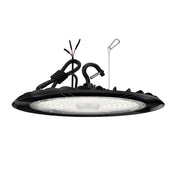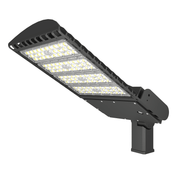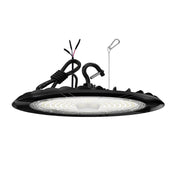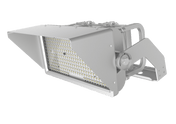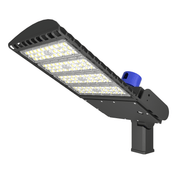Core trends in the industrial lighting industry
1. Energy efficiency standard upgrade
The global industrial lighting market is accelerating its transformation to high light efficiency (>180 LM/W) and long life (>50,000 hours). The EU's 2024 Ecodesign Directive requires that the light efficiency threshold of industrial lamps be raised to 155 LM/W, eliminating inefficient products.
2. Intelligent penetration is accelerating
In 2024, the global intelligent industrial lighting market will reach US$8.2 billion, and it is expected to exceed US$21 billion in 2030. Among them, microwave sensing and Internet of Things (IoT) integration technology will become standard in warehousing and manufacturing scenarios.
3. The green supply chain increased
The RE100 initiative covers more than 400 companies, driving the growth of demand for carbon footprint traceability throughout the life cycle of industrial lighting products. 90% of buyers require suppliers to provide EPD (Environmental Product Declaration) certification.
Analysis of the matching degree between HYLELE products and industry needs
| Industry Pain Points | HYLELE UFO High Bay Light Solution | Technical support |
|---|---|---|
| High energy consumption (traditional lamps account for 35% of a factory’s electricity bill) | 200 LM/W ultra-high light efficiency, combined with microwave induction energy-saving mode, comprehensive power saving rate of 70% | SMD5050 chip + intelligent drive power patent technology |
| High maintenance cost (annual failure rate>15%) | Aviation aluminum die-casting integrated structure, IP66 protection level, 60,000 hours of zero light decay commitment | Vacuum coating heat dissipation + shock-resistant silicone sealing process |
| Intelligent transformation has poor compatibility | Support DALI2.0/Zigbee protocol, seamlessly connected to BMS/SCADA system | Programmable control module (firmware OTA upgrade) |
Industry application data verification
Case 1: North American auto parts factory
Replace 800 sets of 400W traditional metal halide lamps with HYLELE UFO High Bay Light
Results: Annual electricity bills decreased by $187,000, maintenance costs decreased by 92%, and workshop illumination uniformity increased from 0.4 to 0.8
Case 2: Middle East cold chain logistics center
Customized -30°C low temperature version + humidity sensor linkage solution
Results: Light decay is controlled within 3% in extreme environments, and the cargo damage rate is reduced by 1.2 percentage points
Market Outlook and HYLELE Strategy in 2030
Regional Growth Engine
The annual demand growth rate driven by the upgrading of the Southeast Asian manufacturing industry reached 14.2%
North American warehouse automation transformation has created a $1.2 billion replacement market
Technology Evolution Path
| stage | Technical direction | HYLELE R&D layout |
|---|---|---|
| 2025-2027 | LiFi optical communication integration | Start of prototype testing in joint laboratory with Technical University of Munich |
| 2028-2030 | Digital Twin Lighting System | Obtained ISO 23247 intelligent manufacturing system certification |
Green Standard Upgrade: From Energy Efficiency Optimization to Full Lifecycle Management
Carbon Footprint Traceability Mandatory
The EU plans to include industrial lighting products in the Carbon Border Adjustment Mechanism (CBAM) in 2026, requiring manufacturers to disclose complete carbon footprint data from raw material mining to scrapping and recycling, forcing the supply chain to use 95% recyclable materials (such as the aviation aluminum recycling process used by Hylele).
Dynamic Energy Saving Certification System
AARO's multi-dimensional monitoring methodology for UAP phenomena4 will be used as a reference. In the future, the energy efficiency certification of lamps will no longer rely on static laboratory testing, but will instead require the provision of dynamic energy-saving rate reports in real scenarios, promoting the technical iteration of microwave sensing + environmental adaptive algorithms.


